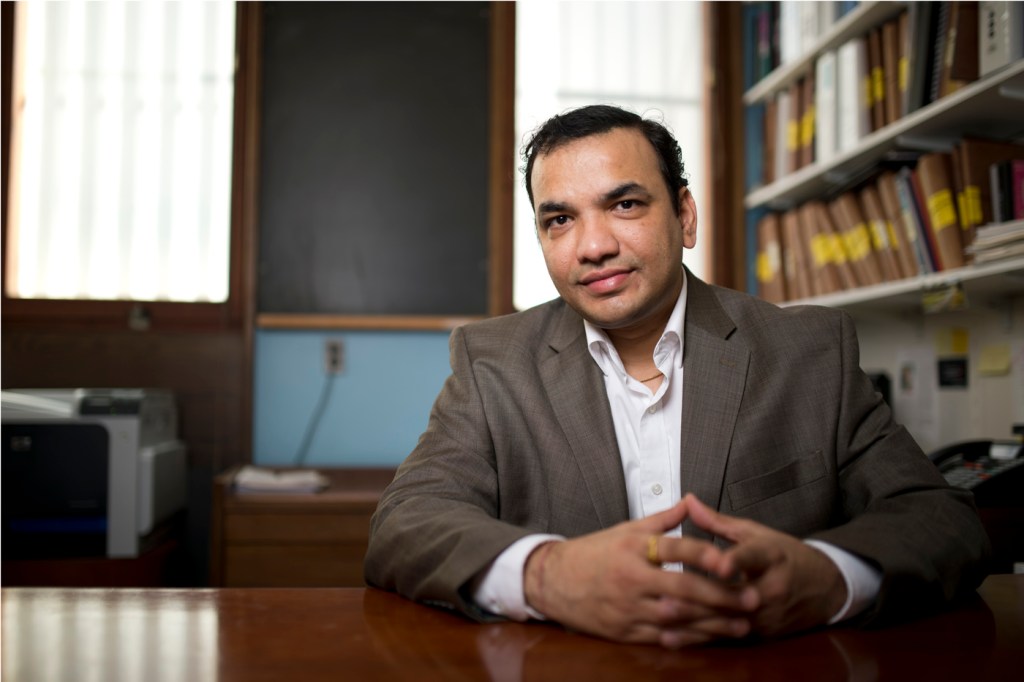A promising alternative to medical marijuana

Ganesh Thakur, an assistant professor in the School of Pharmacy, has received a five-year grant for more than $2 million from the National Institutes of Health to continue his groundbreaking work to create a novel class of compounds to treat glaucoma.
Thakur, who is the grant’s principal investigator, is developing a new glaucoma treatment that mimics the positive effects of marijuana’s active ingredient tetrahydrocannabinoid molecule, or THC, but does not include the negative side effects and toxins that come with smoking pot.
Blindness is one of the most feared disabilities, Thakur said, affecting about 60 million people worldwide. Glaucoma is the leading cause; it is a multifactorial optic neuropathy and a prominent risk factor is increased intraocular pressure.
Thakur said studies conducted in the 1970s showed that THC lowers intraocular pressure in those who smoke marijuana. It does so by interacting with a specific cannabinoid receptor, CB1, present in the eye and other important organs.
“But that doesn’t mean people should smoke marijuana,” Thakur noted. “When one smokes marijuana, there are so many other toxic chemicals that get into the body. And it lowers IOP only for a short period of time—about three or four hours.”
Thakur is developing a new class of compounds called “CB1 Positive Allosteric Modulators,” or PAMs, which work by potentiating the action of endogenous THC-like compounds, referred to as endocannabinoids, present in the body. These PAMs lack the psychiatric side effects and memory impairment associated with THC. Nor are they addictive or liable to be abused.
Thakur emphasized that CB1 activation can also be neuroprotective, adding that the development of CB1 PAMs may be preventive and protective when it comes to treating glaucoma. “If you can target glaucoma in a safe and effective way, you are probably looking at the pot of gold,” Thakur said.
If left untreated, about 80 million people worldwide will be affected by blindness by 2020, according to the World Health Organization. Thakur explained that the current repertoire of approved IOP-lowering drug classes has significant limitations, particularly with long-term use.
“This project will have a great impact on treating glaucoma,” Thakur noted. “The grant is for five years, and NIH sees a lot of potential in this project.”
With this grant, Thakur said he and his team at Northeastern, in collaboration with colleagues at institutions in the U.S. and Scotland, will strive to make more potent and longer lasting compounds. While this grant is specifically targeted toward glaucoma treatment, Thakur said he hopes the compound can also be used to treat other disabilities such as PTSD, neuropathic pain, cancer, and Huntington’s disease.
“There have been tremendous efforts from academia and industry to develop CB1 targeting medications, but they have been met with limited success,” Thakur said. “That shows this is an important target, but it needs to be approached in a different way. And I think our data shows allosteric modulation is the way to go.”





